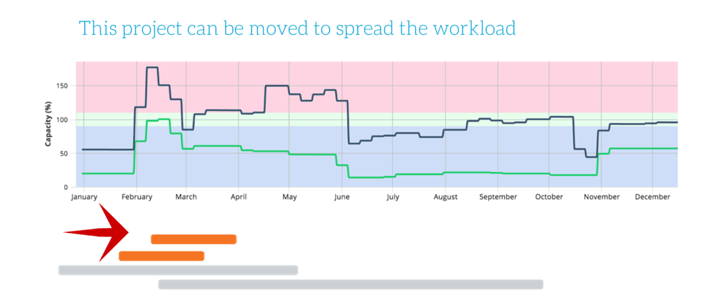Team and project management software are essential to effectively manage activities and resources, especially in a increasingly complex environment. Here are 5 reasons that justify the use of such tools.
Beeye aims at increasing organisational performance and productivity. How? By coordinating people and activities, managing employee allocation and providing information on what’s going on in the organisation.
By increasing transparency and accountability, this smart planning tool ensures that everybody’s working on high value activities.
Let's take a look at these 5 simple needs most organisations require. But, surprisingly not many of them are answered.
What resources do I need?
With a team and project management software, companies can plan activities and estimate the amount of work required, and therefore know the resource requirements for the short, medium and long term.
Who has never seen a project delayed because the right person wasn’t there at the right time? Hiring implies considerable delays, and it is far better to predict upfront what resources will be needed, than rush into finding key resources at the last minute.
In addition, a longer-term vision puts things into perspective and helps companies make better decisions. For example, if the workload of my team is too high for one month only, it is better not to hire a permanent employee, unless we are sure to continue at the same pace. A better solution could be to move around certain activities to better distribute the workload, or to hire a temporary resource for the critical period.

A balanced workload for employees
When using a team and project management tool, it is possible to properly allocate the employee workload and avoid chronic work overload.
Even if the trend is to work more hours per week , with Americans working an average of 47 hours a week according to a Gallup survey , it has been widely demonstrated that an increase in working hours does not result in a proportional increase in productivity.
A study shows that spending 55 hours to 70 hours a week at work would bring no gain in productivity. It is time to stop bragging about work overload and systematic overtime, and start working less, but smarter.
Getting there, however, requires managing capacity upfront and planning a realistic workload, otherwise emergencies and delays will put considerable pressure on employees and make the extra work to catch up inevitable.

Of course, it is sometimes necessary to do some overtime to deliver on time. The problem begins when this work overload becomes the norm even though this situation can often be avoided. A good capacity management process can make the difference between a work overload perceived as unnecessary and caused by poor planning, and an intense period seen as a temporary challenge. To learn more about capacity management and the benefits associated with it, please click here.
Optimisation of activities execution
A tool like Beeye enables activity planning that takes into account several key variables such as employee availability, their skills and hourly cost. It is now possible to distribute the projects and activities optimally, and thus avoid many bad surprises with unavailable resources that could cause further delays on other activities.
 ⁂
⁂
